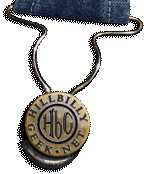Concerts and Residencies
Grades Seven - Twelve
- Residency Activities
Necessary skills for learning to tell stories from written and oral sources are taught. How to find, select, and adapt stories for telling is a major component of lessons for this age group. How to write personal or other types of stories suitable for telling is also an option for this age group. Telling stories to peers, or lower grade students if time allows, is also utilized.
^top Permalink^ < Previous Next >
Adult Residency Activities
Discuss various methods of learning to tell stories and common problems of storytelling Provide resources for stories and storytelling Discuss adapting stories for telling, how to make personal stories more interesting, places for telling, methods for collecting family stories.
^top Permalink^ < Previous Next >
Adult Residency Activities for Experienced Storytellers
Along with the above activities, also include demonstrating styles of storytelling; exploring different types of stories; studying vocal techniques; emceeing procedures; learning self-promotion and fee setting tips; procedures for producing a storytelling festival; but most importantly, practice telling and critiquing stories.
^top Permalink^ < Previous Next >
Senior Citizen Groups
Discuss how they can use storytelling in everyday life or for performing Demonstrate how to make their life stories more interesting for telling Provide opportunities for telling and improving storytelling skills
^top Permalink^ < Previous Next >
Special Population Groups
Techniques used with mainstream groups are easily adapted to fit the various needs and abilities of special populations. These groups excel in storytelling as it does not depend on high reading skills, attention span, or even mobility.

